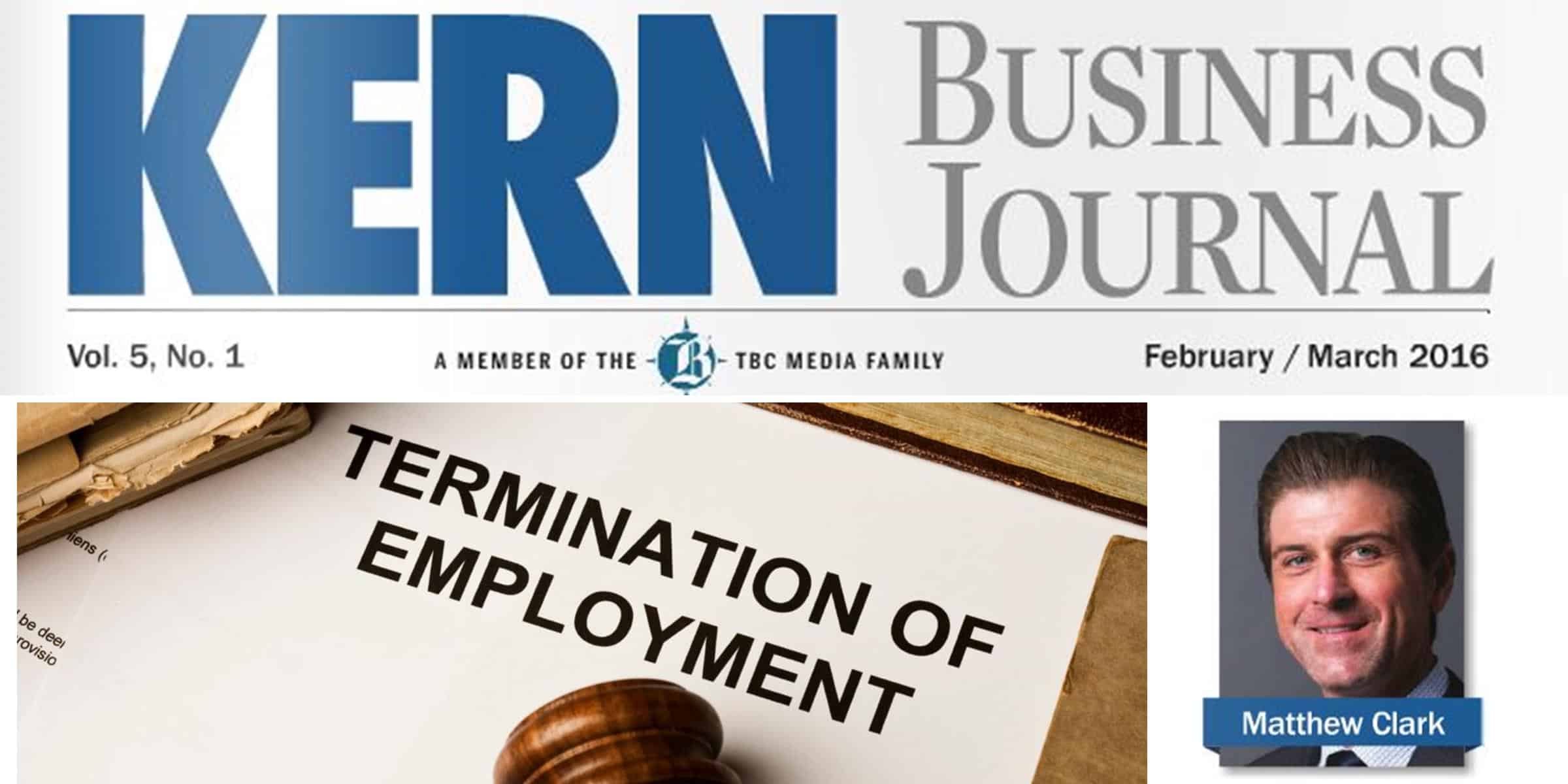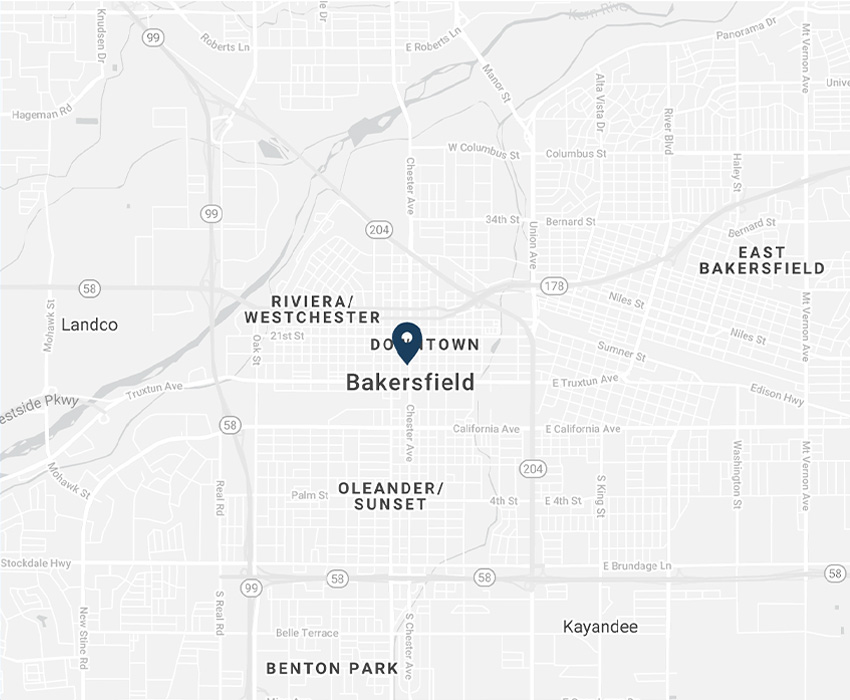Employers: Avoid potential wrongful termination lawsuits by following these tips
February 10, 2016 | Article by Chain | Cohn | Clark staff | News & Media , Tips & Information Social Share

NOTE: The article below, written by Chain | Cohn | Clark wrongful termination attorney Matthew Clark, appeared in the February/March issue of the Kern Business Journal. The bi-monthly publication by The Bakersfield Californian showcases business and industry developments across Kern County.
To see the entire publication online, click here. To see the article in the Kern Business Journal, click here.
* Please note: Chain | Cohn | Clark is no longer accepting wrongful termination cases *
Neither I nor my firm Chain | Cohn | Clark handle cases for employers. In fact, we do quite the opposite. We represent employees who have been wrongfully terminated. With this in mind, I offer you some suggestions on what I look for in a wrongful termination case, or, as an employer, some things you should avoid.
When evaluating a claim for wrongful termination, I first look to see if the employee was subject to an employment contract. We see these most often with employees who are members of a union. The union typically negotiates a collective bargaining agreement, and that agreement often times controls the termination of the employment agreement. For example, an employment contract may require that the employer terminate an employee for cause. In most cases I see, the employee is “at-will,” meaning there is no employment contract.
Second, I look to see if my potential client’s employer violated California’s Fair Employment and Housing Act (FEHA). FEHA strives to prevent discrimination in the workplace. If an employee is terminated for a discriminatory purpose, that employee likely has a claim under FEHA. FEHA prevents discrimination based on age, race, religion, gender, sexual orientation and disability, among other things. In Kern County, we primarily see cases involving age discrimination.
Age discrimination falls under the regulatory authority of both FEHA and the Age Discrimination in Employment Act (ADEA), a Federal act.
At first blush, age discrimination is simple. If an employer fires and employee over 40 years of age, and then replaces them with someone substantially younger, that fired employee has established a “prima facie” case for age discrimination. Once the fired employee establishes a prima facie case for age discrimination, the burden shifts to the employer to prove that the termination was not discriminatory; hence, the employer must prove that the employee was terminated for a legitimate, non-discriminatory, business purpose. If the employer is successful, the employee may claim that the non-discriminatory purpose was simply a pre-text, and that in actuality the termination was discriminatory – and so the circle of allegations goes.
Oftentimes, the motivation for terminating an employee is mixed. For example, an employer may have acted with discrimination, by firing an employee in their 60s while replacing that employee with someone in their 20s, but the employer may also have evidence that the older employee was failing to satisfactorily perform their job duties. These “mixed-motive” terminations were recently addressed by the California Supreme Court in Harris v. Santa Monica. Harris requires, amongst other things, that the terminated employee show that unlawful discrimination was a substantial motivating factor in the termination. If the employer can show that the termination would have happened anyway, without discrimination, the damages the employee may be entitled to are greatly reduced.
It is difficult, if not impossible, to address the complex issues surrounding wrongful termination cases in this short article. Accordingly, I advise any employers with questions to seek out qualified human resources professionals.
For more information related to wrongful termination cases and employment law, visit chainlaw.com.
— Matthew Clark is a senior partner at Chain | Cohn | Clark where he focuses on wrongful death, wrongful termination and motor vehicle accident cases, among other injury cases for people of Kern County.
_ _ _
*NOTICE: Making a false or fraudulent Workers’ Compensation claim is a felony subject to up to 5 years in a prison or a fine of up to $150,000 or double the values of the fraud, whichever is greater, or by both imprisonment and fine.

